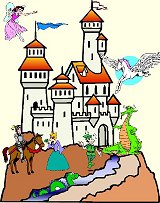|
Phoenix
- in ancient Egypt and in classical antiquity, a fabulous bird
associated with the worship of the sun.
The Egyptian
phoenix was said to be as large as an eagle, with brilliant scarlet
and gold plumage and a melodious cry. Only one phoenix existed at any
time, and it was very long-lived—no ancient authority gave it a life
span of less than 500 years. As its end approached, the phoenix
fashioned a nest of aromatic boughs and spices, set it on fire, and
was consumed in the flames. From the pyre miraculously sprang a new
phoenix, which, after embalming its father's ashes in an egg of myrrh,
flew with the ashes to Heliopolis
(“City of the Sun”) in Egypt, where it deposited them on the altar
in the temple of the Egyptian god of the sun, Re. A variant of the
story made the dying phoenix fly to Heliopolis and immolate itself in
the altar fire, from which the young phoenix then rose.
The
Egyptians associated the phoenix with immortality,
and that symbolism had a widespread appeal in late antiquity. The
phoenix was compared to undying Rome, and it appears on the coinage of
the late Roman Empire as a symbol of the Eternal City. It was also
widely interpreted as an allegory of resurrection and life after
death—ideas that also appealed to emergent Christianity.
"phoenix" Encyclopædia Britannica
from Encyclopædia Britannica Premium Service. |

